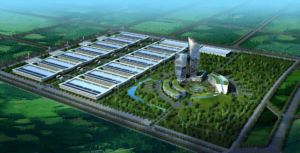
The Future of Data Centers in Africa
Future of Data Centers
I’ll skip the definition of what a traditional data center is, but what I do want to discuss is how Africa can solve its storage and computing infrastructure in a much more affordable way that can scale very quickly now that we know everything is moving to the cloud and digitization requires infrastructure. It doesn’t matter what sector you’re in, from the government sector to health care to education, everything today is getting digitized.
however Today, all of this storage infrastructure has been centralized outside of the African continent, but the war in Ukraine has changed the world’s mindset when it comes to data centers; the Ukrainian government had to relocate data centers out of harm’s way, and Russians may be able to gather data if they gain access to it; and, as most countries are realizing, having data stored outside is a national security issue. What if there is an embargo and your data is stored outside? You will be unable to retrieve it. Worse, what if a foreign country with voting power decides it can also access the data for whatever reason? All countries will be required to localize storage and computing power.
FUTURE OF DATA CENTERS: WHAT IS DISTRIBUTED CLOUD?
To better understand this, imagine a peer-to-peer swarm. For those who do not know what that is, Together, all peers (including seeds) sharing a torrent are called a swarm. For example, six ordinary peers and two seeds make a swarm of eight. Basically, is a grid made of multiple nodes (in this case servers spread in different locations) but operates as a cluster.
It is currently been used for CDN (content delivery network) and is one example of a distributed cloud, where storage (e.g., video content) is positioned in geographically diverse regions to reduce the latency of delivery. However, this type of infrastructure was never extended to anything else because it goes against the current model which is extremely centralized.

Check out the work we are doing on developing low-cost AI-powered distributed cloud Infrastructure.
5 benefits of a decentralized architecture
Let’s consider some of the benefits of a decentralized architecture.
1. Low latency can be achieved by avoiding the use of unmanaged networks between machines and computing resources. In most cases, the speed-of-light factor in a well-planned transport network is not a significant blocker. However, the overall application-level responsiveness is determined by load distribution and bandwidth factors as well. And then there are gains from placing application components topologically closer to each other. An example use case would involve industrial control loops, for example, wind turbines, based on learning models or multi-machine correlations.
2. Autonomy and security is not only an issue for individual devices or machines. It can also be required on the level of a business facility, such as a factory or a power station. Having ownership of the required computing and storage resources enables a higher level of control and security. An example use case would involve highly sensitive facilities, such as factories and power stations.
3. Resilience is being able to handle all relevant failure cases in a cost-effective way. Having smaller, more decentralized strike-out units lowers the impact of failures, and decreases the need for allocating spare capacity. An example use case would involve society-critical facilities, such as power stations.
4. Network scalability can be improved if we avoid transporting massive data volumes that are generated by machines all the way to centrally located data centers. We need to manage the trade-off between having to compute and storage resources on “the other side” of scalability bottlenecks. An example use case would involve massive volumes of video cameras with real-time computer vision processing.
5. Regulatory compliance requires that data be processed and stored within borders: nation-state, regional, or business facility. This can be achieved with data services built on policy-controlled local storage resources. An example use case would involve the processing of personal data. Many countries have regulations about keeping local copies and storing metadata.
However, very few investments in Africa focus on this, we want to copy and paste what the rest of the world is doing and failing also. WEB3 applications are coming, and yet the infrastructure is not following the trend fast enough. Are we going to fall again behind and adopt an infrastructure that will fail in the long run? my opinion does not really matter, only execution does.


